Learn what's new in ITASCA software (FLAC3D, FLAC2D, 3DEC, PFC3D, PFC2D, and MassFlow) for Version 9.
Perpetual license holders benefit from continuous support within their software version's support period. Although perpetual licenses cannot run point releases, they still qualify for bug fix updates and minor improvements, maintaining stability and reliability of the software environment. Perpetual license holders also benefit from continuous support within their software version's support period. During the support period, perpetual licenses still qualify for bug fix updates and minor improvements, maintaining stability and reliability in their software environment.
Contact Sales@ItascaSoftware.com to ask about accessing point-releases by adding Maintenance to your perpetual license.
SOLVE FASTER
FLAC3D 7 saw some impressive solution performance improvements over previous versions, but with FLAC3D 9 we've pushed this even further by optimizing the zone stiffness stability calculations, so that static and dynamic models run approximately 2-3 times faster for zones using the SOLVE command.
SHAKE FASTER
Maxwell Damping, an improved form of damping, is now available for zones, structures, and deformable links. With Maxwell damping, FLAC3D is a dynamics dynamo - making the analyses of large 3D site response and soil-structure interaction practical, while maintaining the high accuracy FLAC3D is known for.
FLOW & HEAT FASTER
Implicit solvers for saturated-fluid flow and thermal calculations have been implemented for much faster analyses. For example, the new solvers provided the same response for a nuclear waste repository thermal model run over 10,000 years of simulated time, but required less than 30 minutes to run in FLAC3D 9. The same model requires 43 hours of modeling time using FLAC3D 7. Fast analytical temperature calculation for specified sources has also been implemented.
FISH FASTER
For math calculations, assigning stresses, and accessing properties FLAC3D 9 has a modest 10% boost in performance compared to Version 7. However, if you are still running Version 6 or older, update to Version 9 and see performance improvements of between 2 and 100 times using FISH splitting (more efficient than looping) and FISH operators (multithreaded FISH functions). Actual performance gains will depend on the FLAC3D version and your computer hardware.
WORK FASTER
Zone plotting is now multi-threaded for 10x faster plot generation. And the saving/restoring algorithm is faster, especially for models with many groups and slots.
MAXWELL DAMPING
Systems undergoing dynamic loading, such as an earthquake or explosive blast, naturally dissipate vibrational energy over time. For a dynamic numerical analysis, some form of artificial damping needs to applied so that the model should reproduces such energy losses.
FLAC3D 9 introduces Maxwell dynamic damping for time-domain seismic deformation analyses. FLAC3D models using Maxwell damping can be 10-200 times faster, and as accurate, than those models using Rayleigh damping. With Maxwell damping, large, 3D site response and soil-structure interaction are now practical to analyze.
SOIL STRUCTURE INTERACTION
For example, the FLAC3D 9 model shown below simulates a caisson foundation, using shell elements, which is much stiffer than the surrounding soils. This model consists of nearly 100,000 zones and over 15,000 structural shell elements.
An analysis of a 30-second earthquake input time history for this model, using a typical computer, requires approximately 10 hours using Maxwell damping, whereas it would require more than 50 days when Rayleigh damping was used. In other words, using Maxwell damping, the calculation is 120 times faster for this model. This is a substantial benefit for similar practical projects.
RAMBERG-OSGOOD HYSTERETIC DAMPING
The Ramberg-Osgood model has also been added as one of several hysteretic damping calculations for dynamic modeling. The Ramberg-Osgood hysteretic model overcomes the shortcoming of overly large damping at large shear strains by other available hysteretic damping models in FLAC3D. Hysteretic damping may be preferred where: (1) designers and licensing authorities do not accept fully nonlinear simulations and (2) faster model run times are desired, as additional damping (e.g., Rayleigh) may not be necessary.
Similar to 3DEC and PFC joints, Zone Joints are an alternative to Interfaces and better represent multiple intersecting joints, faults or discontinuities in small-strain FLAC3D models. The advantage of Zone Joints is that they are two-sided, so the order in which they are created does not affect the results, and forces/displacements at the intersections are more accurate. Contacts are created between separate Zone Joints, defining a two-sided, internal surface that forces can be transmitted across. Mohr-Coulomb is the default joint behavior, but all built-in contact models can be used.
Zone joints also use an incremental formulation for normal stress thereby resolving some Interface related penetration issues. Although FLAC3D does not support any joint cutting functionality, Griddle generated FLAC3D grids include external/interval face groups representing discontinuities. 3DEC generated model zones, joints, and groups can also be easily converted to FLAC3D grids using the new block to-flac3d command.
OPEN PIT EXAMPLE
Below you can see a series of plots for a 500-meter deep open pit with several large faults. The model mesh was generated using Griddle. The site geology includes several rock lithologies and there is a nearby waste dump. One critical fault has a lower friction angle than the others. This example demonstrates the main considerations for modeling faults in FLAC3D and will be available shortly in the FLAC3D 9 documentation.
FLAC3D 9 introduces new non-linear structural elements for ground support for beams and piles/rockbolts and for shells, geogrids, and liners. Simple plastic hinges have been supplemented with a numerical integration scheme.
BEAM-TYPE STRUCTURES
- The beam-type plastic constitutive models update the internal element forces by integrating the internal stress over the beam volume using a numerical integration scheme.
- The plasticity is induced by axial and bending deformations; twisting deformation induces an elastic response.
- The beam may have either a rectangular or circular cross section.
- Integration points are distributed throughout the volume of the beam elements.
- There are three beam plastic constitutive models, each of which is a one-dimensional version of the corresponding 3D model used by the zones:
- von Mises (steel beams)
- Mohr Coulomb (concrete beams)
- Strain Softening/Hardening Mohr Coulomb (concrete beams)
The following commands are for an rectangular cross-section aluminum ally beam:
struct beam cmodel assign von-mises
struct beam cmodel plastic-integration rectangular cross-section rectangular layout 3 5 3
struct beam property direction-y (0,1,0) young 68e9 poisson 0.33 strength-yield 270e6 modulus-plastic 0.0; 6061-T6 Al alloy
SHELL-TYPE STRUCTURES
- The plastic constitutive models update the internal element forces by integrating the internal stress over the shell volume using a numerical integration scheme.
- There are a group of integration points distributed throughout the volume of each shell element.
- There are three shell plastic constitutive models, each of which is a plane-stress version of the corresponding 3D model used by the zones:
- von Mises (steel shells)
- Mohr Coulomb (concrete shells)
- Strain Softening/Hardening Mohr Coulomb (concrete shells)
- Plasticity is provided by the DKT, CST and DKT-CST finite elements.
With the addition of three new constitutive models, FLAC3D now includes 27 built-in constitutive models, not including any options.
CONCRETE CONSTITUTIVE MODEL
This Concrete model is a plastic-damage model where damage is based on fracture-energy and modulus degradation. Damage may be both extension and compression. It is compatible to Mohr-Coulomb yielding criteria.
COLUMNAR-BASALT CONSTITUTIVE MODEL (COMBA)
The Columnar-Basalt (COMBA) model accounts for the presence of up to four arbitrary orientations of weakness (ubiquitous joint) in a non-isotropic elastic matrix. The model can be applied to model quadrangular (hexagonal) columnar basalt with cross-joints by specifying that two (three) of the ubiquitous joints are oriented along the column axis, and another along the cross-joints.
The model's elastic behavior accounts for the compliance of the column matrix and that of the joints. The criterion for failure on the planes consists of a strain hardening/softening Coulomb envelope with tension cutoff; the strain hardening/softening behavior can be specified (using a table) for joint cohesion, friction, dilation, and tension. In addition, an amplification factor can be applied to joint dilation that depends on the angle between a set direction (i.e. the column mean axis) and the direction of slip on the joint.
Creep on weak planes is available with the Creep Option.
VON-MISES CONSTITUTIVE MODEL
The Von-Mises model has a yield envelope based on a von-Mises criterion. The position of a stress point on this envelope is controlled by an associated flow rule for shear failure. This model is suitable for metal-like materials and includes optional kinematic hardening. This model may be applied to both for solid zones or ground support structural elements.
IMPROVED PLASTC-HARDENING (PH) MODEL
The Plastic-Hardening (PH) model is a shear and volumetric hardening constitutive model for the simulation of soil behavior. FLAC3D 9 uses a new implementation based on the new Brick algorithm which considers the unloading-reloading strain-dependent stiffness modulus. This overcomes shortcomings in the previous algorithm which demonstrated poor performance for nested hysteretic loops (e.g., overshooting problem), making the PH model a more practical dynamic model.
IMPROVED UBIQUITOUS-ANISOTROPIC MODEL (CANISO)
The Ubiquitous-Anisotropic Model combines the Anisotropic (Transversely) Elastic Model and the ubiquitous-joint model. In FLAC3D 9, this model has been improved through the addition of a Mohr-Coulomb matrix option. The joint behavior in both cases is based on a Mohr-Coulomb law.
NEW LOOK AND FEEL
The most apparent change with FLAC3D Version 9 is the new user interface (UI). It's designed to be flexible, fit the way you work, and have more efficient plotting. Rather than fixed layouts, dynamically add what you want, where you want it, by splitting new windows in the work space. The UI is organized into the following:
- Main Menu.
- Project pane to view associated files, sets, and plots.
- Command Console to input or view model commands and see model output or program messages (information/warnings/errors)
- Content Workspace for creating new, and editing existing, (a) data files, (b) plots, (c) sketch sets, geometry sets, building block sets, and (d) the Model pane.
- Contextual Tools/Help panel which changes depending on what has focus.
- Layout Toggles to hide and show the the Project pane, Workspace, or Command Console.
- Status bar.
Watch our YouTube overview video that walks you through the new UI.
Use the Select Content drop-down menu to view the model pane; or create a new (or modify an existing) data file, plot, sketch-, geometry-, or building blocks-set. Use the Split drop-down menu to divide the work space into a new window (left, right, above, or below the current window) to view additional data files, plots, sets, or the model pane.
EXTRUDER NOW SKETCH
The Extruder is now part of a new Sketch tool. The Sketch tools includes 2D drawing, DXF import, and meshing tools to generate structured and unstructured 2D meshes automatically. Use the extruder tools to extend the model into 3D. Structured meshes may also be further modified using Building Blocks.
New Tools:
- Slope wizard for simple, 1-, 2-, and 3-bench, and dam profiles (similar to FLAC/Slope)
- Tunnel wizard for circular, rectangular, arched roof, double arch, 3-arch horseshoe, and 5-arch horseshoe profiles
- Revolve a 2D Sketch along a vertical or horizontal axis
- As well as linear extrusions, now extrude a 2D Sketch along a curved path interactively. For a structured mesh, generate models and modify them in Building Blocks.
{insert image carousel of sketch, wizards, 2-tunnel extrusions, curved tunnel extrusion (with bounds & topo)}
MODEL PANE
The Model Pane includes tools for selecting model objects for:
- Manually or automatically grouping zones and zone face
- Assigning zone constitutive models
- Densifying zones (into more, finer zones)
- Creating 2D structural elements (shells, liners, etc.)
In FLAC3D 9, new tools have been added to the Model Pane:
- Define and interactive specify material properties
- Create, then import/export material properties in a built-in properties database
BETTER PLOTTING
- Added more contour plot control. including user-defined contour ramp.
- Format and precision of the contour legends can be specified.
- Added option to swap axes for table and profile charts.
- Added option to include minor gridlines to charts.
- Added improved chart logarithmic scale.
- Added option to omit “past” states when plotting yield states.
- Added more contour plot-items (e.g., fos, fluid-head, and histories).
PYTHON
The Python programming language is embedded inside FLAC3D. Python is a general purpose programming language with good support for scientific and numerical programming. Python has been extended to allow models to be manipulated from Python programs. The Python modules NumPy, SciPy, and Pyside are included with FLAC3D for scientific computing, science and engineering tools (optimization interpolation, integration, etc.), and customizing the user interface, respectively.
With FLAC3D 9, Python has been updated to version 3.10.5 to let you work with the latest available modules.
FISH
FISH is an embedded programming language that enables the user to interact with and manipulate models, defining new variables and functions as needed. These functions may be used to extend, add to, or control the program.
FLAC3D 9 includes the latest version of FISH and updated documentation for working with multithreaded FISH splitting and operators.
MULTITHREADED FISH
If you are modeling using FISH, be sure to use splitting rather than loops and use operators in order to best utilize your multithreaded computer hardware and minimize your modeling time.
For example, taking the FLAC3D Hoek-Brown Slope example in the documentation, rather than using a constant value for the Hoek-Brown constitutive model property constant-sci, let's assign a value to each zone using a pseudo-random uniform distribution within 30 ±10 MPa, to provide a degree of rock strength variability across the model as shown below.
A timing test was run five times for each of the FISH functions above by calling the time.clock intrinsic function at the start and end of the function and calculating the difference. The following figure shows the average time required for each approach discussed above (in hundredths of a second) for a model with 228,000 zones. The test was performed on an i9 CPU (3.7 GHz) with 64 GB RAM and 10 cores (20 logical processors).
While any of the methods reviewed above are effectively instantaneous, the performance will become more important for very large models with millions or tens of millions of objects (zones, blocks, etc.) and/or if such functions are being called during cycling (i.e., each step). As such, a method (operators) that is over 260,000 times faster than another (loop while) becomes highly desirable.
DEMONSTRATIONS & TRIALS
- Itasca Software run without a valid license automatically operate in DEMONSTRATION mode, with some program limitations.
- FLAC3D 9 allows up to 1,000 zone models to run - TRY FLAC3D 9 TODAY.
- In addition to demonstration software, TWO-WEEK TRIAL licenses are available upon request.
LICENSES
- All FLAC3D 9 license types (standard/desktop, network, and web) now allow two instances per license on the same computer. For example, run two different models at the same or build one model while running another one.
- More than one license type can be active at a time, and the software will look for licenses in all active types.
- Updated license types and security logic do not require hardware drivers to operate.
- Node locked network licenses are now fully supported. These include the ability to check out (detach) a license from the network server to a local computer.
WORKING REMOTELY
- The UI can now detect if GPU support is enabled during Windows Remote Desktop connections and stop forcing ANGLE mode, which removed any plots.
Itasca is working to simplify modeling workflow to exchange information within our own software solutions and between the outside world, including partnering with other geoengineering oriented companies.
MINEDW PORE PRESSURES
MINEDW is Itasca's finite-element, groundwater flow software for mining applications. Complex pore pressure distributions around mines can be calculated using MINEDW and imported into FLAC3D models to capture the influence of effective stress on excavation stability. With FLAC3D 9, this work flow is simple and fast where MINEDW files (*.MPD), or generic pore pressure data files (*.CSV), can be imported directly into FLAC3D using the command zone gridpoint import pore-pressure. The command simultaneously imports the pore pressure data and interpolates it across the FLAC3D model.
OTHER INTEGRATION
IMPORT MODEL GRIDS
In addition to directly importing model grids from ABAQUS and ANSYS, FLAC3D 9 can now import MIDAS grids directly.
POST PROCESSING
Looking for additional post-processing options, exporting model zone data in the VTK format continues to be available.
MORE TO COME
We are currently working on expanding these capabilities and are in discussions with radar, satellite monitoring, and ground sensor companies.
PARTNERING WITH ITASCA
If your company is interested in partnering with Itasca to improve geoengineering workflows and data exchange, please contact us at software@itascacg.com.
Experience the Future of Geotechnical Modeling: Revolutionary Machine Learning Models in FLAC2D and FLAC3D V9.2
ITASCA is proud to introduce groundbreaking modeling based on large model Machine Learning (ML), setting a new standard in geotechnical software. This revolutionary addition empowers users of all skill levels to swiftly test various model outcomes by simply adjusting model parameters via user-friendly sliders—no scripting required.
Built on Decades of Expertise
Our ML models are built upon over forty years of consulting experience, drawing from our extensive history of developing sophisticated models for clients. This expertise is now embedded in FLAC2D and FLAC3D, offering a robust and reliable foundation for your geotechnical modeling needs.
Key Benefits of ML Models
Ease of Use: Transform your modeling experience with intuitive parameter adjustments. The slider-based interface allows you to explore different outcomes quickly and effortlessly, regardless of your technical background.
Rapid Insights: The ability to instantly change model inputs and see continuous model outcomes allows you to rapidly build physical insights into the geotechnical problem. Insights and understanding are reached much faster than the traditional paradigm of inputting new parameters and rerunning a model.
Backed by the proven FLAC engine: Use the machine learning tool to get a rapid answer, and for more detailed results and visualization, optionally use the “Run in FLAC” button to launch the same calculation in FLAC.
Speed and Efficiency: Instantly visualize the impact of parameter changes on your model, enabling rapid scenario testing and decision-making.
No Scripting Required: Focus on results, not the code. Our ML models eliminate the need for scripting, making advanced modeling more accessible.
UNIQUE OFFERING
ITASCA's ML models provide a unique modeling capability unmatched by any other geotechnical software provider. This innovation provides unprecedented capabilities for addressing geotechnical challenges with ease and precision.
USE CASES
The new ML models in FLAC2D and FLAC3D V9.2 are versatile and cater to a wide range of applications, including:
Academic: Enhance teaching by incorporating advanced machine learning tools with intuitive modeling software, empowering students and researchers to easily grasp and explore complex geotechnical concepts.
Commercial: Improve project outcomes and efficiency with rapid, accurate modeling that supports informed decision-making in commercial projects.
Consultancy: Deliver exceptional value to clients by leveraging advanced ML models to address complex geotechnical challenges swiftly and effectively.
NEW ML MODELS in FLAC2D v9.2
ITASCA’s initial ML model offering focuses on the common geotechnical and civil engineering task of calculating factor of safety for a rock slope.
Rock Slope Tool: Quickly assess slope stability under various conditions, helping you design safer, more efficient solutions. The rock slope tool calculates the factor of safety for a rock slope using the Hoek-Brown model, based on slope height, slope angle, and various site-specific conditions and material properties.
The model leverages advanced ITASCA machine learning research, incorporating a vast dataset to enhance the accuracy of its analysis and predictions. By applying machine learning techniques to this extensive data, the model improves its ability to identify patterns and relationships within complex geotechnical conditions. This approach enables more reliable and efficient assessments, providing users with insights grounded in a combination of traditional geomechanical principles and cutting-edge data-driven technologies. The result is a tool that offers enhanced predictive power, leading to better decision-making in slope stability and related applications. Future releases will include additional models, expanding your ability to tackle a broader range of geotechnical challenges with ease.
GET STARTED
Experience the future of geotechnical modeling with FLAC2D and FLAC3D V9.2 and its revolutionary ML models. Join the forefront of innovation and unlock new possibilities in your geotechnical projects.
Discover more about FLAC2D and FLAC3D V9.2 and our ML models by contacting our team for a personalized demonstration.
The latest updates to ITASCA software products such as FLAC3D, FLAC2D, 3DEC, PFC, and MassFlow now include point releases (e.g., 9.1, 9.2) between major versions (e.g., 9.0, 10.0). Point releases bring significant benefits for subscription license holders, who always have the most advanced software.
Subscription license holders enjoy seamless access to point releases at no additional cost. These point releases are packed with new features and capabilities developed in response to user feedback and industry advancements. By staying current with point releases, subscribers can leverage the latest tools and functionalities, enhancing their productivity, efficiency, and competitiveness.
Applies to FLAC3D, FLAC2D, 3DEC, MassFlow, PFC3D, and PFC2D:
- New UI object tree that:
- Provides quick and easy access to information about model objects, model files, and program settings
- Permits quick plotting of objects (zones, structural elements, walls), histories, and charts
- Permits quick listing of information in the Console
- Provides quick access to related help topics
- Permits streamlined watch information for selected parameters
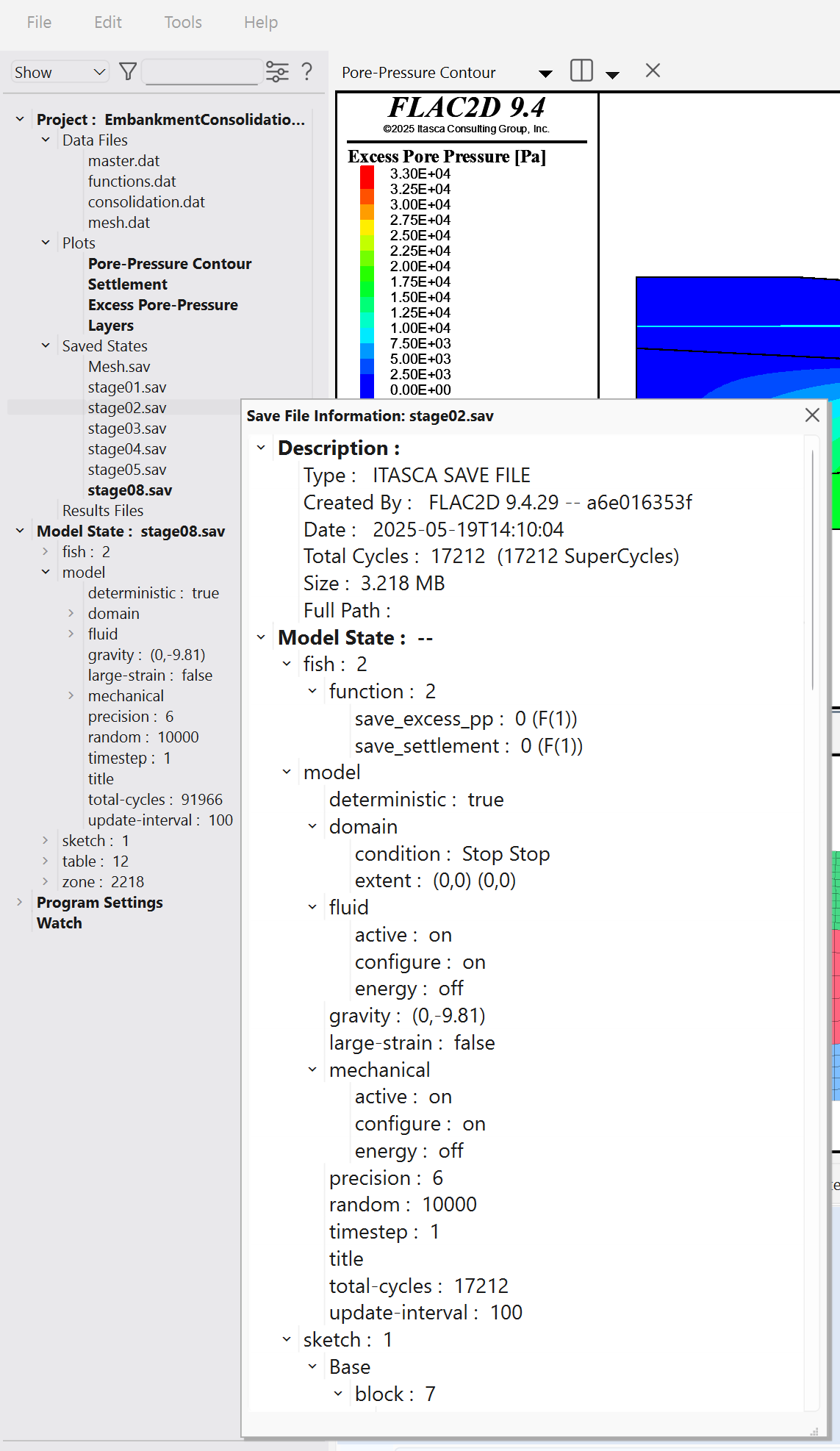
- Export all (or only visible) 1D structural element (e.g., cables, rock bolts, beams, piles) data to tables and plot as charts or export to a CSV file
- Many updates of documentation, including links to YouTube videos
- Improvement on cut-plane where individual plot items can select a cut plane to sync to from a drop-down list
- Add geometry command to create geometry edges from txt or csv file.
Add hide null gridpoint option - Zone Joints now available as part of results files (use command
ZONE JOINT RESULTS ACTIVE ONor go to Tools > Options > Results and check Zone Joints)
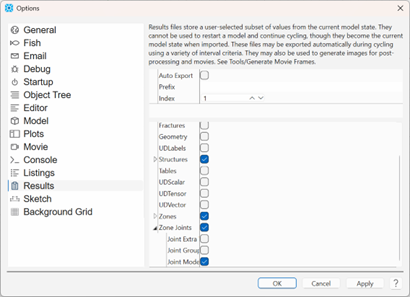
- Improved Rapid Tool to calculate Hoek-Brown material properties
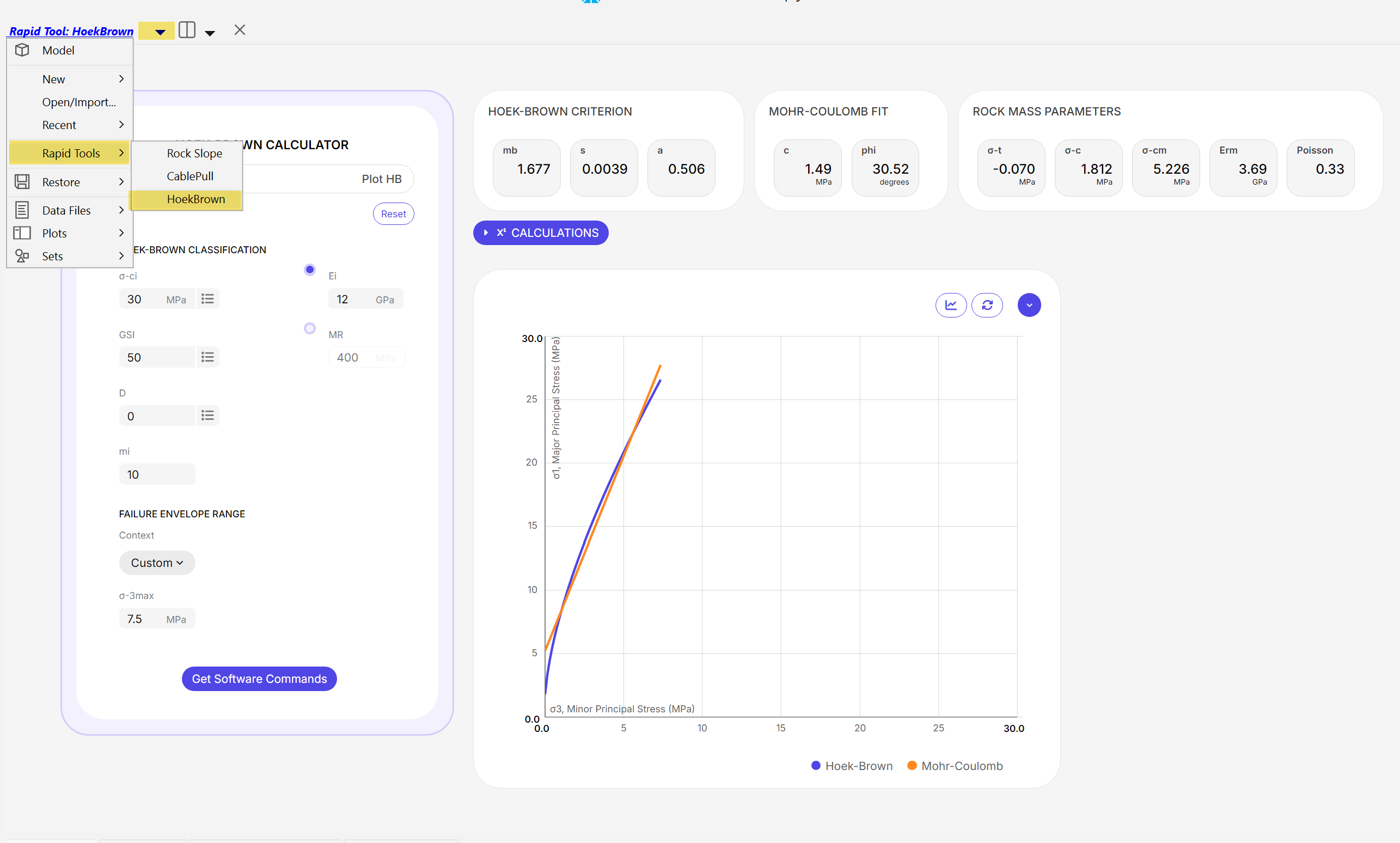
Applies to FLAC3D and FLAC2D:
- CASM (Clay and Sand Model) constitutive model for assessing the static liquefaction potential of tailings dams from a relatively small set of material parameters, most of which can be calibrated from standard laboratory tests
Applies to FLAC3D:
- New Reinforced Concrete Beam example
- IMASS Constitutive model calculates plastic strain only when sloss is positive
- Added Moment Thrust diagram as a plot item under Structural Elements for Shell-type elements and beams (you will need to specify strength and thickness in the plot item attributes)
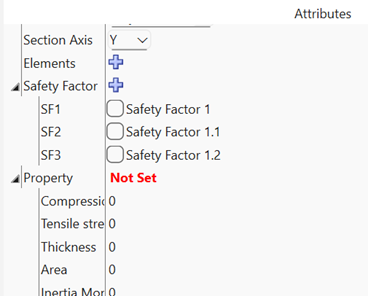
Applies to FLAC2D:
- Dynamic axisymmetric analysis
- Plot 2D contour isolines and include labels
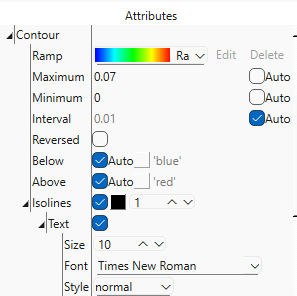
- Plot grid points as labels or contoured in 2D
- Trigon (triangular) option added to the Voronoi Wizard
- New Open Pit Wizard in Sketch (Go to Point/Edge Tools – Slope Wizard, and choose Open Pit from the Forms drop-down menu)
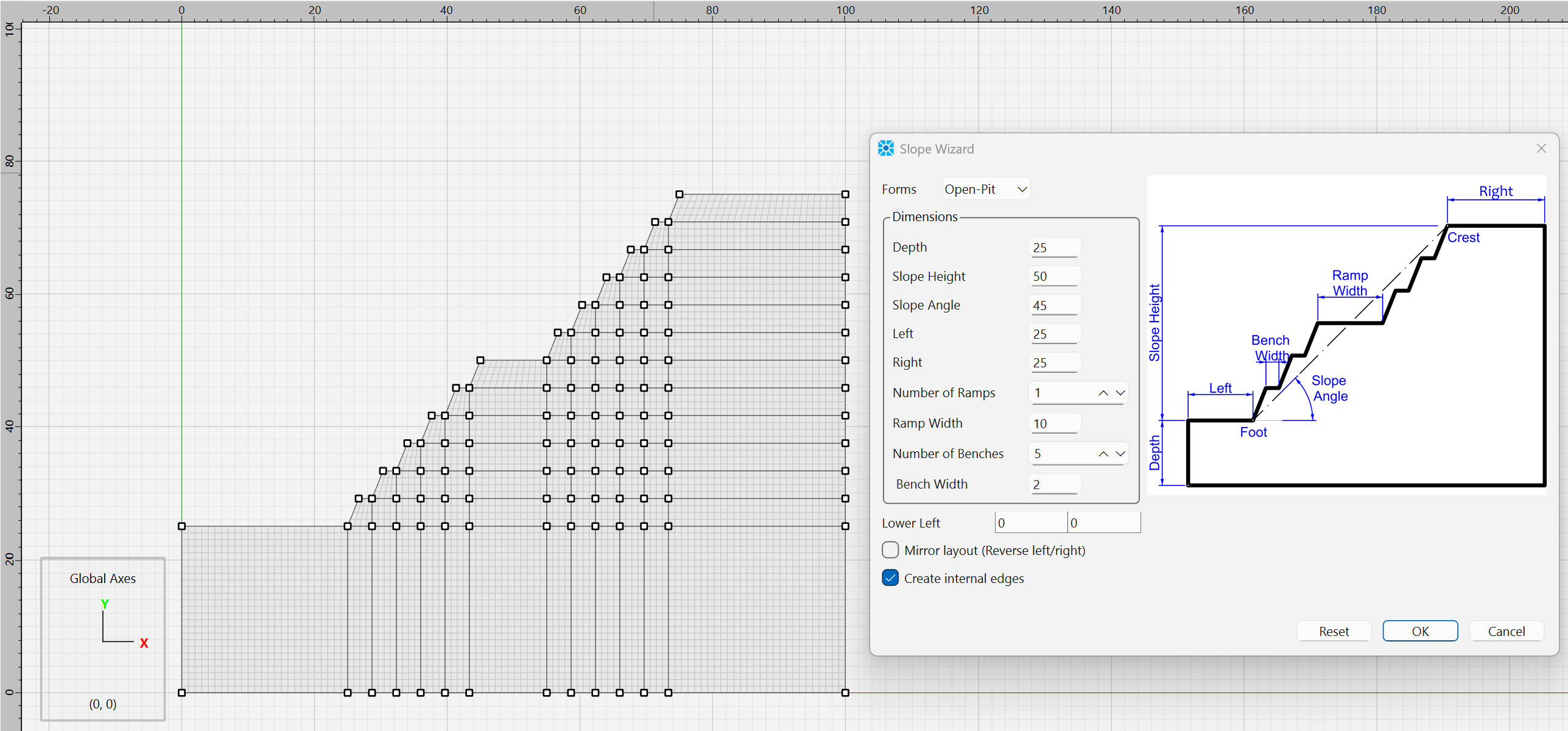
- Create lines in Sketch from an imported table of points via the Import Background Image tool

- Seven new examples and one updated example:
- Displacements near the Face of an Advancing Shaft (axisymmetric analysis)
- Consolidation of an Embankment using Soft Soil
- Consolidation of an Embankment using Mohr-Coulomb
- Lined Tunnel in Saturated Ground
- Saturation and Draining of a Caisson
- Capillary Infiltration in a Dry Caisson
- Deformation caused by filling of a Caisson
- Updated dynamic analysis of a Tailings Dam to include CASM
Applies to 3DEC:
- Fluid flow in 3DEC now works for meshes imported from Griddle
- New Reinforced Concrete Beam example
- IMASS Constitutive model calculates plastic strain only when sloss is positive
Applies to MassFlow:
- Massive simulation speedup in MassFlow when you have lots of draw points and lots of markers
Applies to PFC:
- Extensive documentation added for Bonded Particle Modeling, including links to Material Modeling Package
New features and improvements added to 9.3:
- FLAC3D/FLAC2D:
- Sketch: add an option to combine DFN
- Extruder page accepts drops
- Enable MPI creep with cluster option
- Cable Pull Rapid Tool update
- 3DEC:
- Allow for more than one face group
- PFC:
- Add Hill contact model for rigid-block to rigid-block contacts
Applies to FLAC3D
- Rapid Tool for Cable Bolt Properties from Pullout Calibration
- New bar chart for 1D structural elements
- New example: Assessment of Fault Slip Potential from Sill Pillar Mining
Applies to FLAC2D
New in Sketch
- Can now create points and edges from table
- Can now generate topography (zones) from a table of x, y coordinates
- Improvements the joint-set wizard
- Added a wizard to generate DFNs (discrete fracture networks)
- Added a wizard to generate Voronoi- or tetrahedral-shaped BBM (bonded block models) based on zone-joints
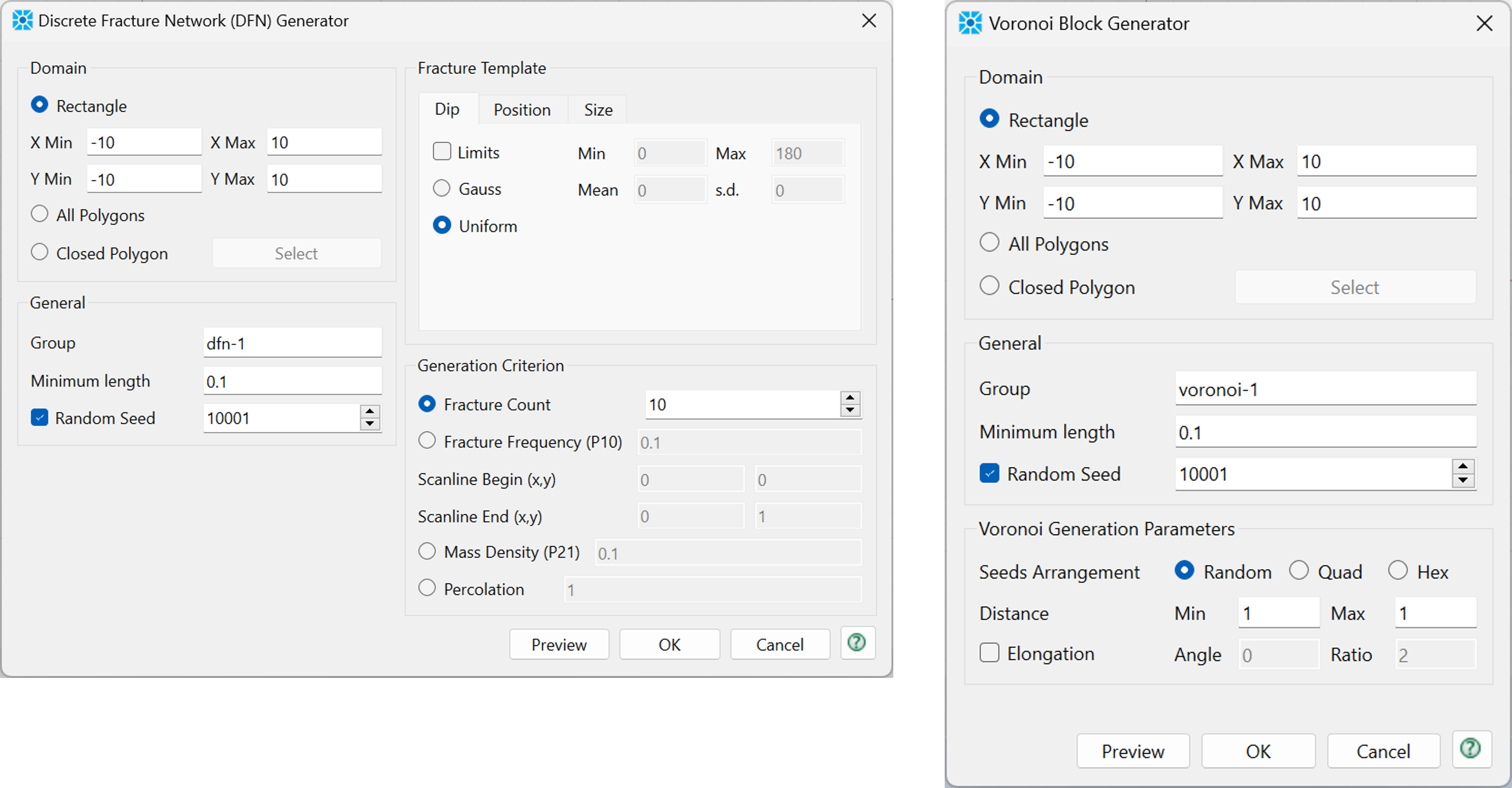
New Examples
- Factor of Safety Calculated for Various Jointed Rock Slopes
- Rainfall on a Slope
- Tunnel Through a Fractured Rock (Voronoi)
- Tailing Dam Static Liquefaction
- Dewatered Construction of a Braced Excavation
- Uniaxial Compression Strength (UCS) Test on a Fractured Sample
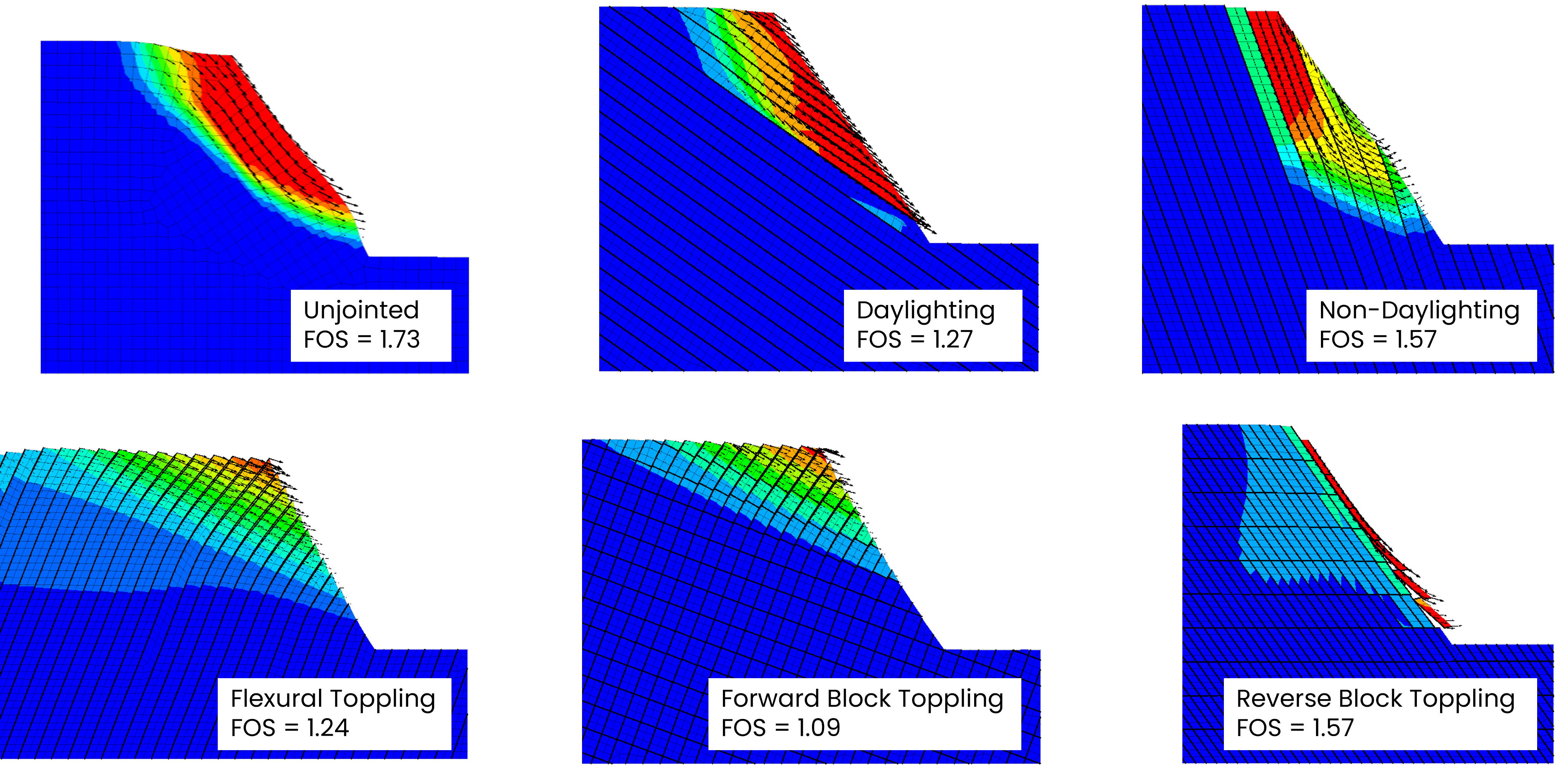
Applies to 3DEC
- New Velocity Weakening joint model
- Similar to a slip-softening model, except that the friction reduces as a function of increasing velocity rather than slip distance
- Added a structure hybrid import command to create hybrid bolt elements from an outside source (e.g., DXF, STL, ITASCA geometry)
- Added a progress bar during joint plotting
- Rapid Tool for Cable Bolt Properties from Pullout Calibration
- New bar chart for 1D structural elements
Applies to FLAC3D
Cluster Computing Option (Parallel Modeling, MPI)
The advent of ITASCA software web licenses made cloud computing possible, allowing many versions of a model to be run for parametric or sensitivity analyses. With v9.2, a new Cluster option allows FLAC3D subscription licenses to greatly speed up their numerical modeling solutions by launching multiple connected model instances in cluster computing environments.
The Cluster option in FLAC3D utilizes a leader-follower architecture. Each node in the cluster network runs a FLAC3D instance, and all the FLAC3D instances are connected through Message Passing Interface (MPI) for data communication and management. Typically, the Console version of FLAC3D is used to streamline cluster computing, but the GUI version of FLAC3D may also be used to view the local model partials on every node during cycling.

CURRENTLY SUPPORTED FLAC3D FEATURES
- Continuous mechanical analysis with both small and large strain configurations
- Discontinuous mechanical analysis with zone joints (small strain only)
- Excavations with apply relax conditions and backfilling
- Dynamic analysis, including Rayleigh/Maxwell damping settings and quiet/free-field boundary condition
- Fluid undrained pore pressure response
- General FISH callback functionalities
- All ITASCA built-in constitutive models
- Factor-of-safety analysis
- General FLAC3D functionalities: create/modify models, save/restore, pre-processing and post-processing (history, plot, etc.)
- Result determinism
THREE TIERS
The FLAC3D Cluster option has three available tiers to choose from:
- BASIC with up to 8 nodes
- ADVANCED with up to 16 nodes
- PROFESSIONAL with up to 32 nodes
SPEEDUP
For large models with millions of zones, a significant reduction in solution time can be achieved. The following chart demonstrates considerable scalability when solving a FLAC3D model with 8 million zones across multiple nodes using the Cluster option (performed on Amazon Web Services (AWS), node type m5a.4xlarge with 16 CPU Cores and 64 GB RAM per node).
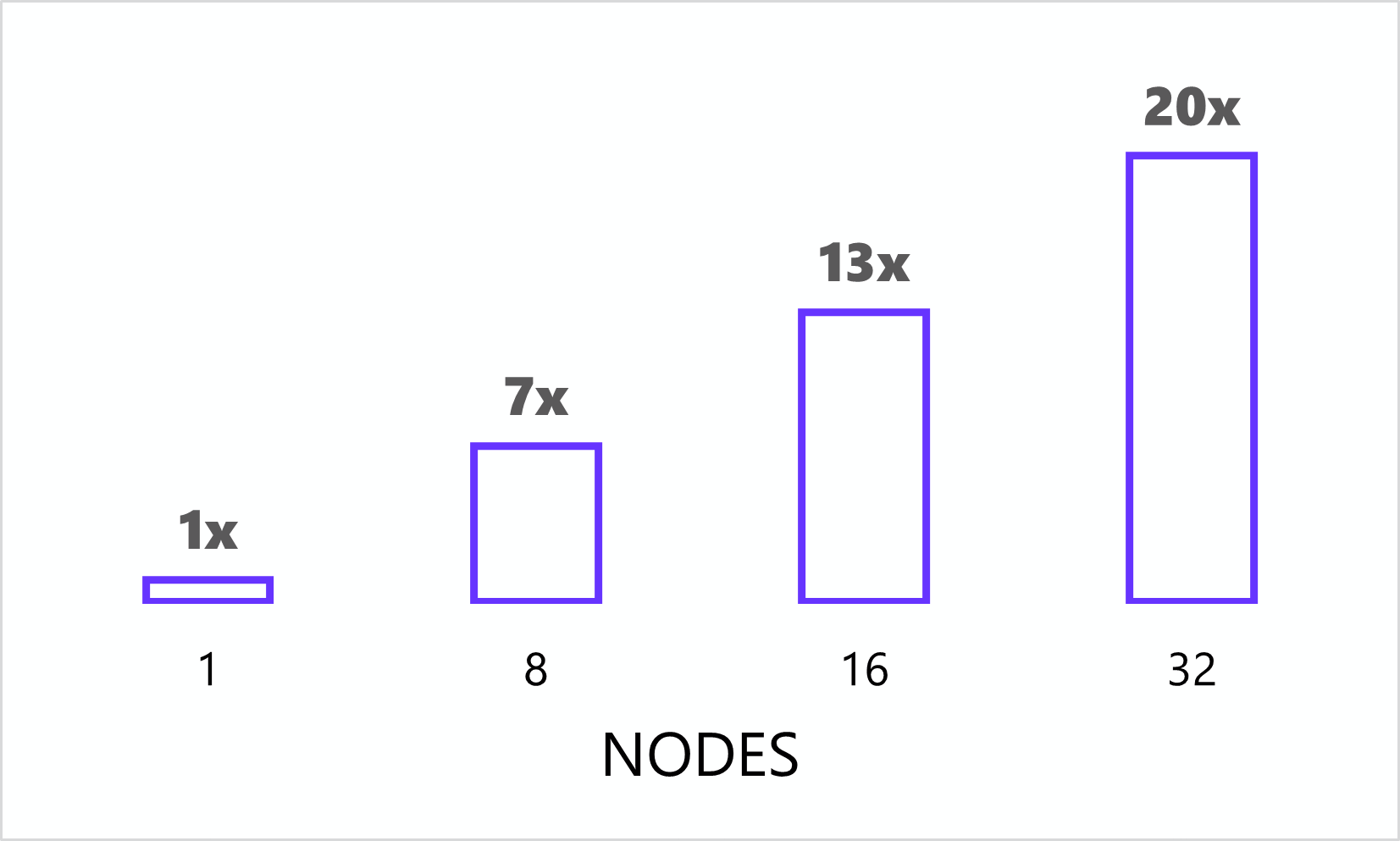
ACCURACY
The Cluster option in FLAC3D does not affect the results. FLAC3D generates results identical to normal runs with the same level of accuracy and determinism. The save files are also cross-compatible between FLAC3D on your computer and the Cluster option.
HOW DO I USE THE CLUSTER OPTION?
The Cluster option can be used with your organization's own local cluster computing system {add link to cluster computing FAQ}, using any cloud provider like Amazon Web Services (AWS), Microsoft Azure, or Google Cloud. Of course, not all organizations have such systems in house, and implementing a solution using a cloud provider can be daunting. For a straightforward, easy-to-use cloud-based solution, ITASCA works with Rescale to provide a pre-configured cluster computing environment that lets you select the number of nodes, hardware required, and apply your ITASCA software web license. Pricing is clearly shown and includes both Rescale's fees and hardware utilized. Rescale will automatically configure your cluster environment, install the latest ITASCA software version, and manage your model run(s). This approach also reduces capital costs since users do not need to invest money in purchasing many computers to perform these analyses.
LEARN MORE about using Rescale for cluster computing.
Performance
WORK FASTER with VERY LARGE MODELS
- For a 30 GB test model with 9.8 million zones:
- MODEL RESTORE is 3.1x faster
- MODEL NEW is 3.5x faster
- MODEL SAVE is 1.7x faster
Constitutive Models
CURVED MOHR-COULOMB MODEL
The traditional Mohr-Coulomb model assumes that a linear shear failure develops, which is just a simplification by linear extrapolation of the experimental data over a limited stress range. However, experimental data covering low stresses clearly show a curved failure envelope for a wide range of geomaterials from clay to rockfill. As such, this simplification could significantly overestimate safety factor, particularly for a shallow slip surface or near the excavated zones exhibiting low normal stress.
ITASCA has developed a new constitutive model called the Curved-Mohr-Coulomb model, which provides both efficiency and flexibility:
- Define the nonlinear (curved) failure envelope by a power law with only three parameters
- Or define the nonlinear failure envelope by inputting a piecewise curve with any pieces
- The curve can be in either shear stress versus normal stress space, or principal maximum stress versus principle minimum stress space
The failure laws based on linear or bilinear Mohr-Coulomb, Hoek-Brown, and Griffith models are special cases of this generalized model. The Curved Mohr-Coulomb constitutive model is available to use with the automatic factor of safety calculation.
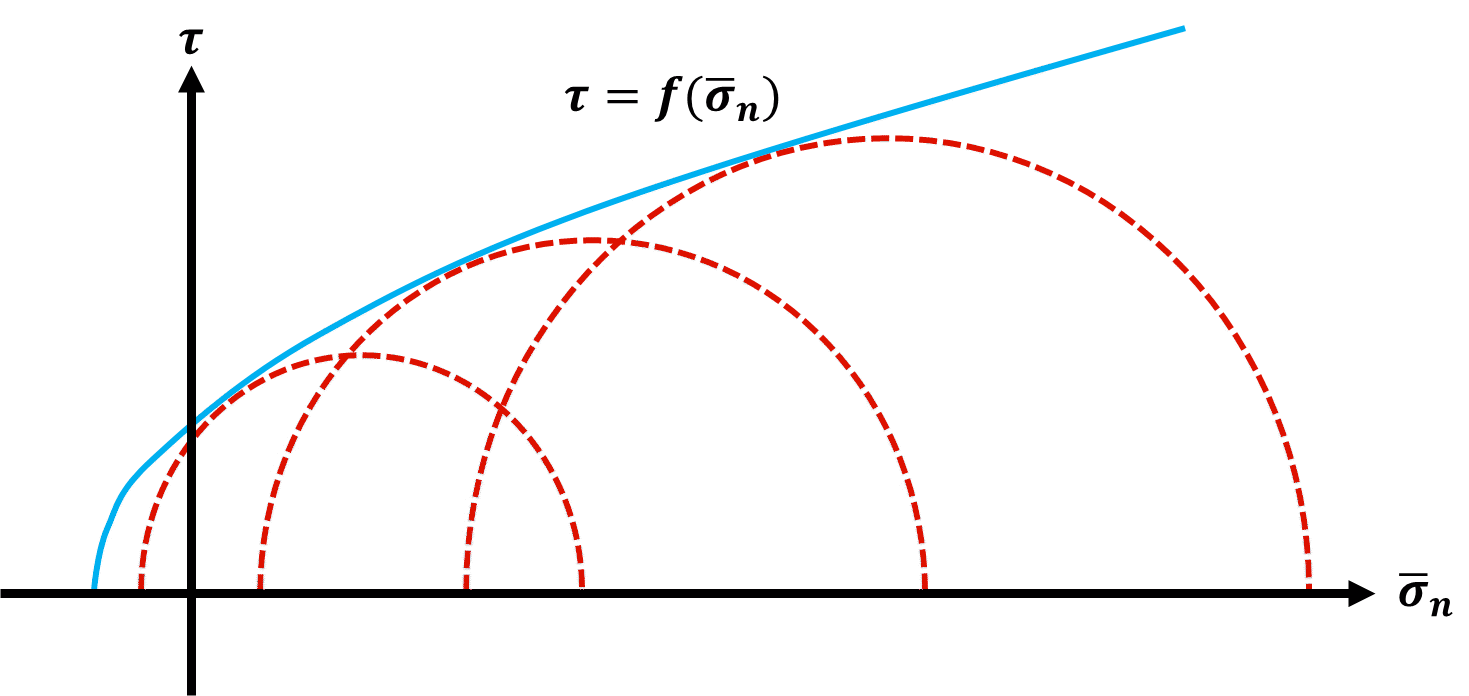
SYNTHETIC MICROSEISMICTY
- Calculate accumulated plastic strain tensor to extract synthetic seismic magnitudes and moment tensors
- Applicable for these constitutive models:
- Mohr-Coulomb,
- Hoek-Brown,
- IMASS (option),
- Ubiquitous-joint, and
- Softening/Hardening Ubiquitous-Joint (SUBI)
- Use
MODEL PLASTIC-STRAIN ON
Sketch Improvements
JOINT-SET WIZARD
- Use this dialog to easily generate and preview up to three joint-sets
- As in UDEC, specify joint-set orientation, spacing, gap, and trace length mean and standard deviation values
- Unlike UDEC, Sketch can mesh around joints floating in space
- Joint-Sets are automatically assigned to a group based on their name and to a special Joint-Set slot to easily identify these edges, separate them as joints, and assign properties
- Individual joints may also be specified manually using the Joint-Set slot
NEW TOOLS
- New logic to include open polygons and floating edges in unstructured meshing
- Automatically merge nearly coincident points to simplify imported DXFs
- Create and assign custom group slots
- Copy and paste objects to another position or Sketch set
Scripting
ZONE FIELD DATA
- Zone field data functions allow the user to make queries about the values of a model variable at arbitrary locations in space and can be used to contour data onto geometry (DXF, STL, etc.)
- Available for FISH, Zone Field Data are now accessible via Python
New Tools
LET GeoBOT HELP
- Ask GeoBOT, the ITASCA AI assistant, all your technical questions
- Trained on ITASCA's help documentation
- Answers questions in 95 languages
NEW UI CONTROL
- Right-click on the divider between windows in the workspace to switch, close, and flip windows
RAPID TOOLS
- Interactive tools powered by machine learning trained on ITASCA software surrogate models
- Includes a Hoek-Brown, rock slope model that instantaneously provides the factor of safety based on a number of adjustable inputs
- Use as a teaching tool to see the impact of different parameters and interactions
- Generate a data file of the source model for direct comparison, to modify it, or as a starting point for a related model
Improved Fluid Flow and Thermal Analyses
The mechanical-fluid and mechanical-thermal commands and workflow have been greatly simplified, making fluid flow analyses much easier to learn and use.
- All fluid properties and initializations are now consolidated within ZONES only via the new
ZONE FLUID PROPERTYcommand. Models using any old fluid or thermal commands will continue to work as v910 is fully save and data file backwards compatible - If the transient response is not needed, quickly solve to steady state without needing to cycle using new the command
ZONE FLUID STEADY-STATE - Now able to create a user-defined permeability saturation curve via Tables
- New soil saturation-suction models, including:
- Gardner,
- Brooks & Corey,
- Van-Genucten, and
- user-defined Tables.
- New wet density contour plot-item
- New fast implicit fluid solver for partially saturated material
- New timestep servo that automatically adjusts timestep (from explicit to implicit, and back if necessary) to solve fluid flow and thermal models as fast as possible
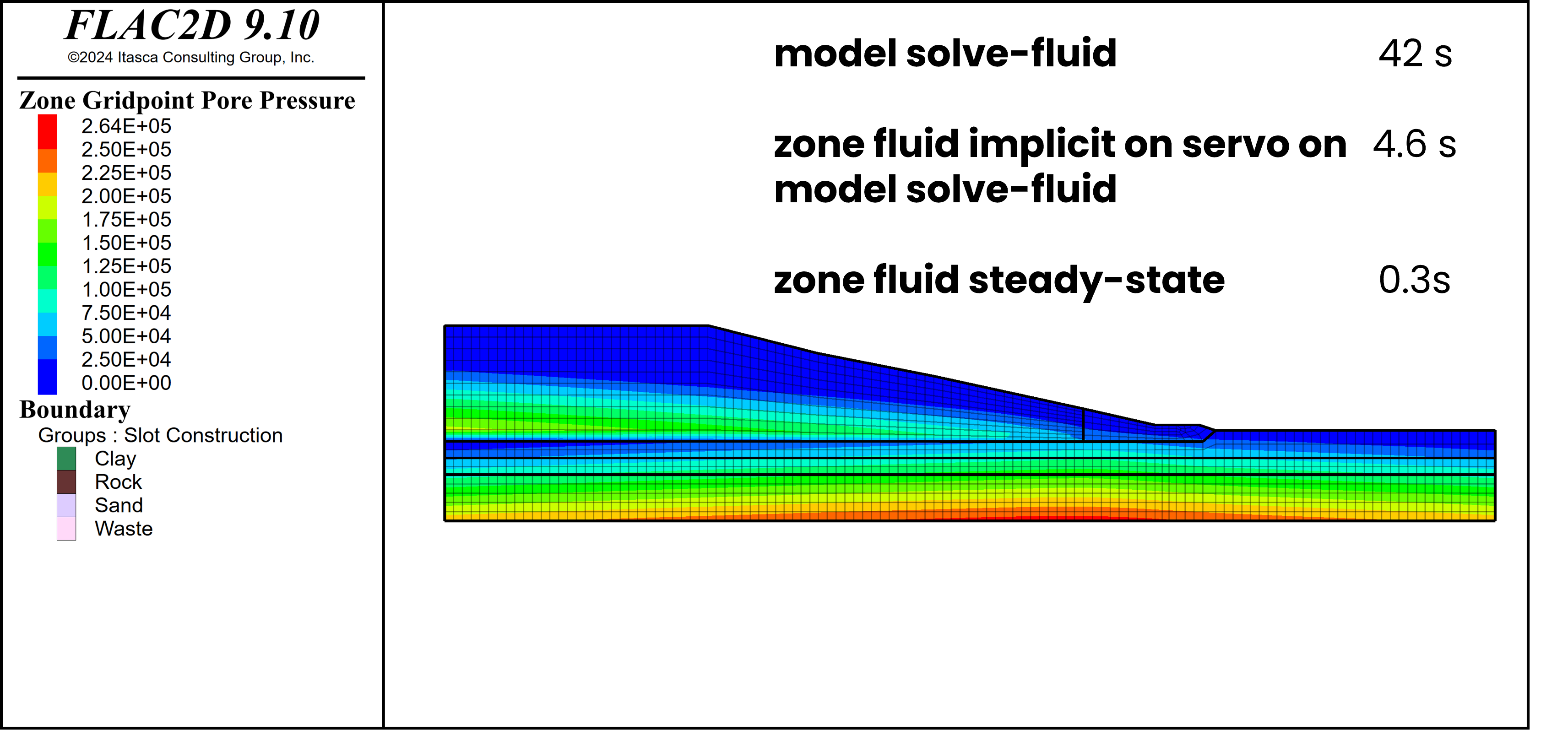
Improved Multi-Process Modeling
Multi-process models contain two or more coupled or decoupled solutions (mechanical/static, fluid, dynamic, thermal, and creep). Significant improvements have been done to greatly simplify multi-process models in order to make such analyses much easier to learn and use. New features include:
- FISH, Python, and Table data between may now be retained between models using the new SKIP keyword when issuing a
MODEL NEWorMODEL RESTOREcommand. This can also be very useful when running a series of parametric models in order to analyze all the model results being recorded - The
SOLVEcommand has been updated to solve one process at a time simplifies working with multi-process models. Processes no longer need to be setONorOFF - The
SOLVE-FLUID(orSOLVE-THERMAL) command can be used for loosely coupled models. The fluid or thermal solution leads (over a set time period), followed by mechanical solution (until set convergence criteria), repeating until the solve criteria is met - The
SOLVE-FLUID-DECOUPLEDcommand can be used to solve a decoupled fluid/mechanical problem, where each step solves for fluid time then solves mechanically to set convergence criteria
Updated Null Logic
Zones may be nulled to represent removal of material that you may want to backfill later or cycle through glaciation periods (ice/no ice). When a zone is nulled, the model behaves as if the zone has been deleted, but the zone position and shape continue to be tracked for easy reuse later.
- To simplify the null state across different processes (mechanical, fluid, and thermal), the null logic is no longer treated as a constitutive model
- To null a zone now, simply use the command
ZONE NULLor the FISH intrinsicszone.nullandgp.null - Null zones are null for all processes (mechanical, fluid, thermal, dynamic, and creep)
- A new zone constitutive model called inactive has been added to provide an impermeable material for fluid flow and a perfect insulator for thermal analyses
Better Scripting
- Python can now access the built-in geometry logic (user-defined nodes, edges, faces, volumes, etc.)
- The contourpy Python library (for calculating contours of 2D quadrilateral grids) is now built-in
And More
- Grouping operations are now faster
- New Hoek-Brown curve fitting and plotting tool – then add these value as
PROPERTYcommands right into your model - QT 6 user interface libraries have been updated:
- User interface appearance is improved on high-resolution monitors
- No need to specify OpenGL Mode
- By place an * at the start of a command, all related warning messages will be suppressed
- New unified dialog to better manage license/key management (Itasca Software License Manager)
- New and updated mechanical and fluid flow examples
